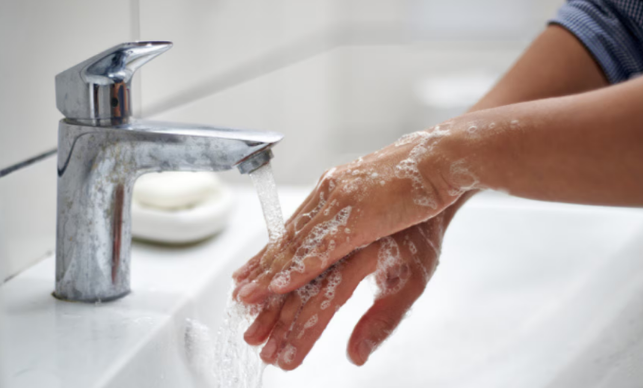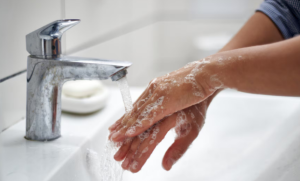
Hey Doctors: Wash your hands!
It’s the sound you hear a thousand times in a hospital—the squirt of sanitizer from a dispenser, the rush of water at a sink. These small acts seem routine, even forgettable. But in reality, hand hygiene is one of the most powerful weapons we have against hospital-acquired infections (HAIs). And yet, compliance has long been frustratingly low.
A new seven-year study from Jiangsu Provincial Geriatric Hospital in China demonstrates the significant impact that hospitals can have when they prioritize handwashing. Using a quality-improvement framework called the Plan-Do-Check-Act (PDCA) cycle, staff boosted hand hygiene compliance from under 50% in 2017 to nearly 87% in 2023. At the same time, infection rates dropped from 2.6% to less than 1%fpubh-1-1588336.
That’s not just a number—it’s thousands of patients spared needless suffering, extended hospital stays, and financial burden.
Why Handwashing Still Gets Skipped
If hand hygiene is so simple and effective, why do healthcare workers skip it? The study’s surveys revealed the hidden barriers:
- Product variety: 95% of staff said they wanted more options for sanitizers.
- Stock problems: Nearly two-thirds said supplies often ran out.
- Skin irritation: Almost half reported pain from frequent sanitizer use.
- Workload: 40% said they were simply too busyfpubh-1-1588336.
These aren’t excuses—they’re signals that handwashing is not just about personal discipline. It’s about creating a system that makes it easier, faster, and more comfortable for workers to do the right thing.
The PDCA Cycle: A Hospital’s Playbook
The research team turned to the PDCA cycle, a framework pioneered by W. Edwards Deming, often called the father of modern quality improvement.
- Plan: They identified obstacles through surveys and brainstorming.
- Do: They introduced new sanitizers, non-touch faucets, reminder signs, and regular training.
- Check: They audited compliance on a weekly basis and monitored sanitizer usage.
- Act: They provided feedback, rewarded top-performing departments, and set up corrective actionsfpubh-1-1588336.
Instead of one-off campaigns, this was a living cycle—a system that learns, adapts, and improves year after year.
Culture Change, Not Just Compliance
One of the most striking parts of the study is how much effort went into culture change. This wasn’t just about giving people more Purell. The hospital held contests for handwashing dances, produced educational films, and even ran photo competitions. Leaders—from hospital presidents to head nurses—participated in events to demonstrate that hand hygiene mattered at every level.
This kind of social reinforcement matters. Research shows people are more likely to stick to safety protocols when they see peers and leaders modeling the behavior.
The Results: Cleaner Hands, Safer Patients
The numbers speak for themselves:
- Compliance rose from 49% to 87%.
- Accuracy (doing handwashing properly) jumped from 13% to 87%.
- Awareness (knowing when and why to wash) climbed from 62% to 97%.
- Hospital infection rates dropped by two-thirdsfpubh-1-1588336.
In short, hand hygiene moved from an afterthought to a core practice—and patients saw the benefits.
What’s Next for Hand Hygiene?
Despite the success, the study points to ongoing challenges. Nearly half of staff still reported skin irritation from sanitizers. Supply shortages and heavy workloads remain real risks. And as the researchers note, future work should use smart dispensers with identity recognition to track usage more accurately.
The big lesson? Handwashing isn’t just about telling people to try harder—it’s about building systems that make the safest choice the easiest choice.
Why This Matters Beyond One Hospital
Hospital infections kill hundreds of thousands of people worldwide every year. The CDC estimates that hand hygiene alone could prevent 20–40% of these cases. Yet compliance struggles are universal, whether in China, Europe, or the United States.
This study shows what’s possible with persistence, creativity, and system-level thinking. If a busy geriatric hospital can cut infections by two-thirds through a PDCA-driven approach, others can too.
Join the Conversation
What do you think?
- Would contests and creative campaigns help in your hospital or clinic?
- How can administrators balance costs with the benefits of more hygiene supplies?
- Do you think compliance rates can stay high now that the pandemic spotlight has faded?
The future of infection control may depend on how we answer.



